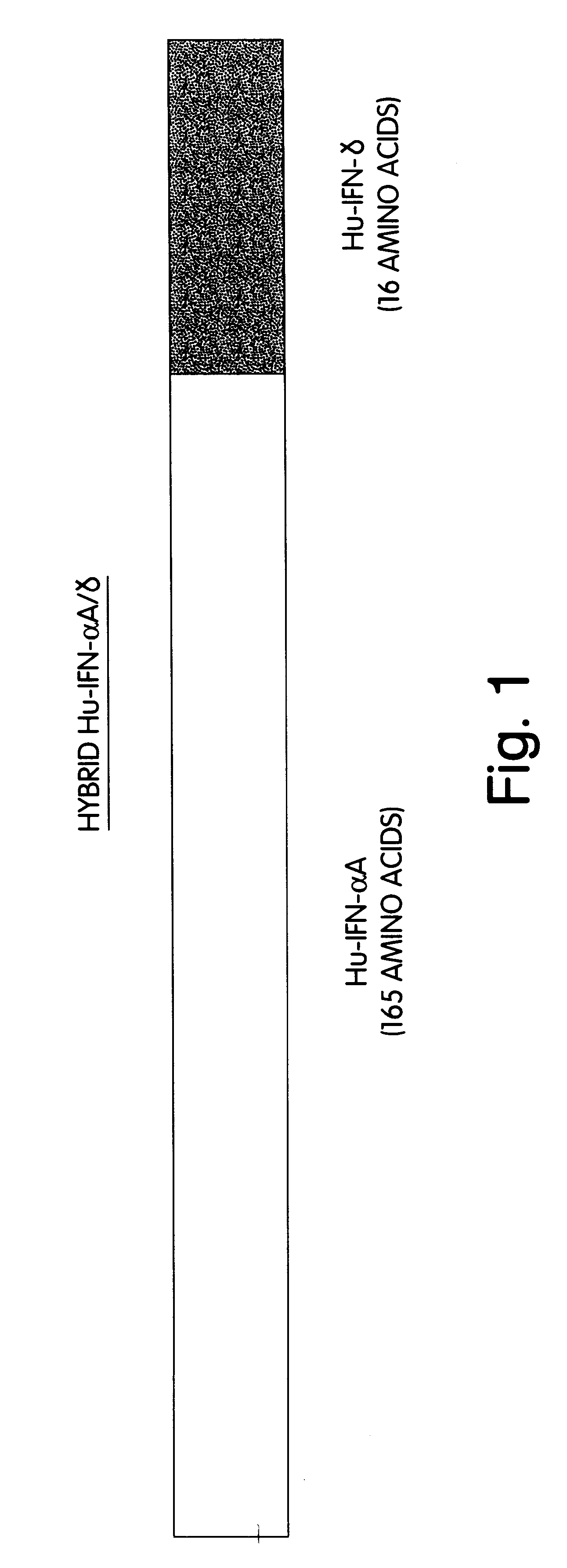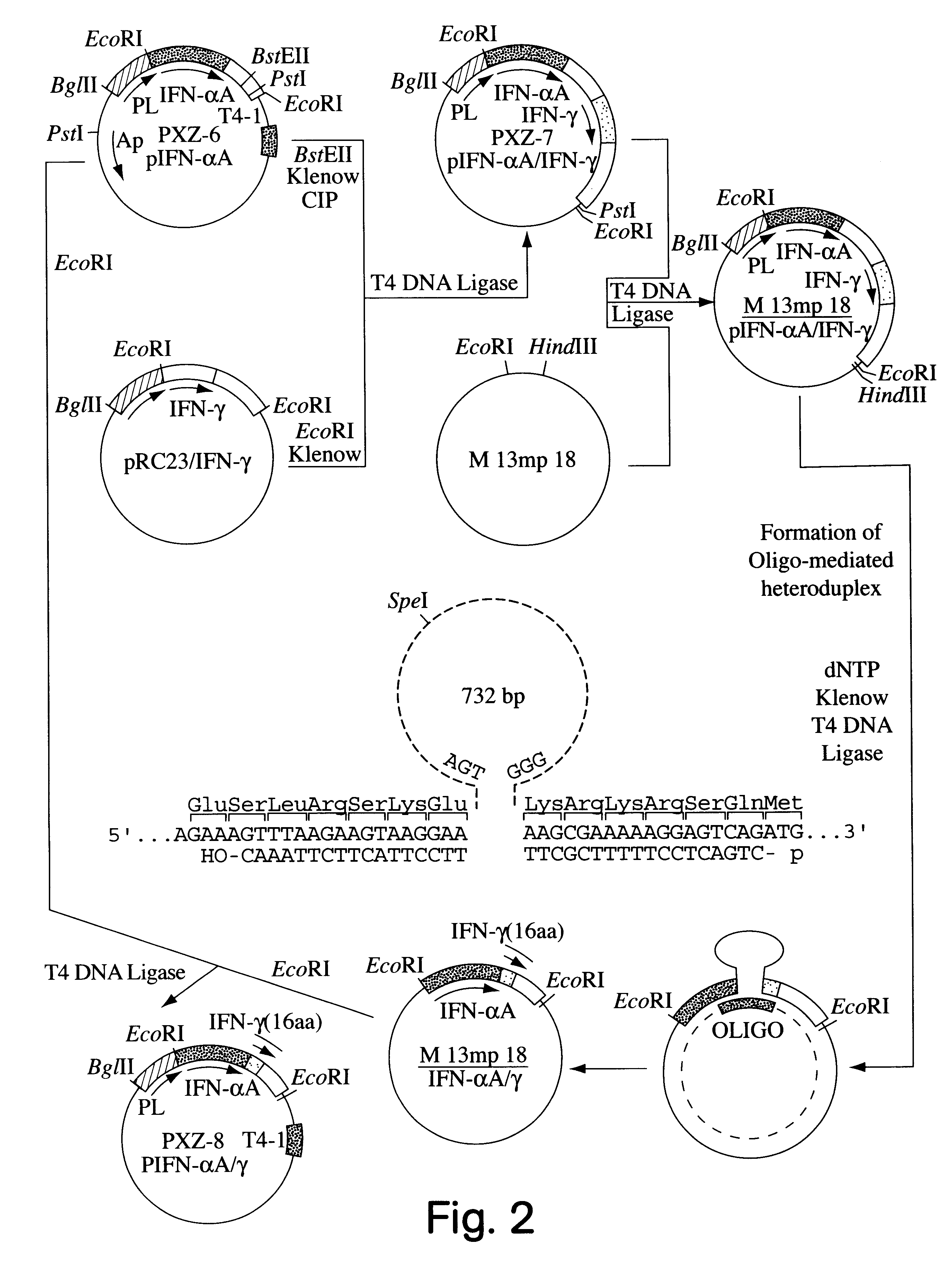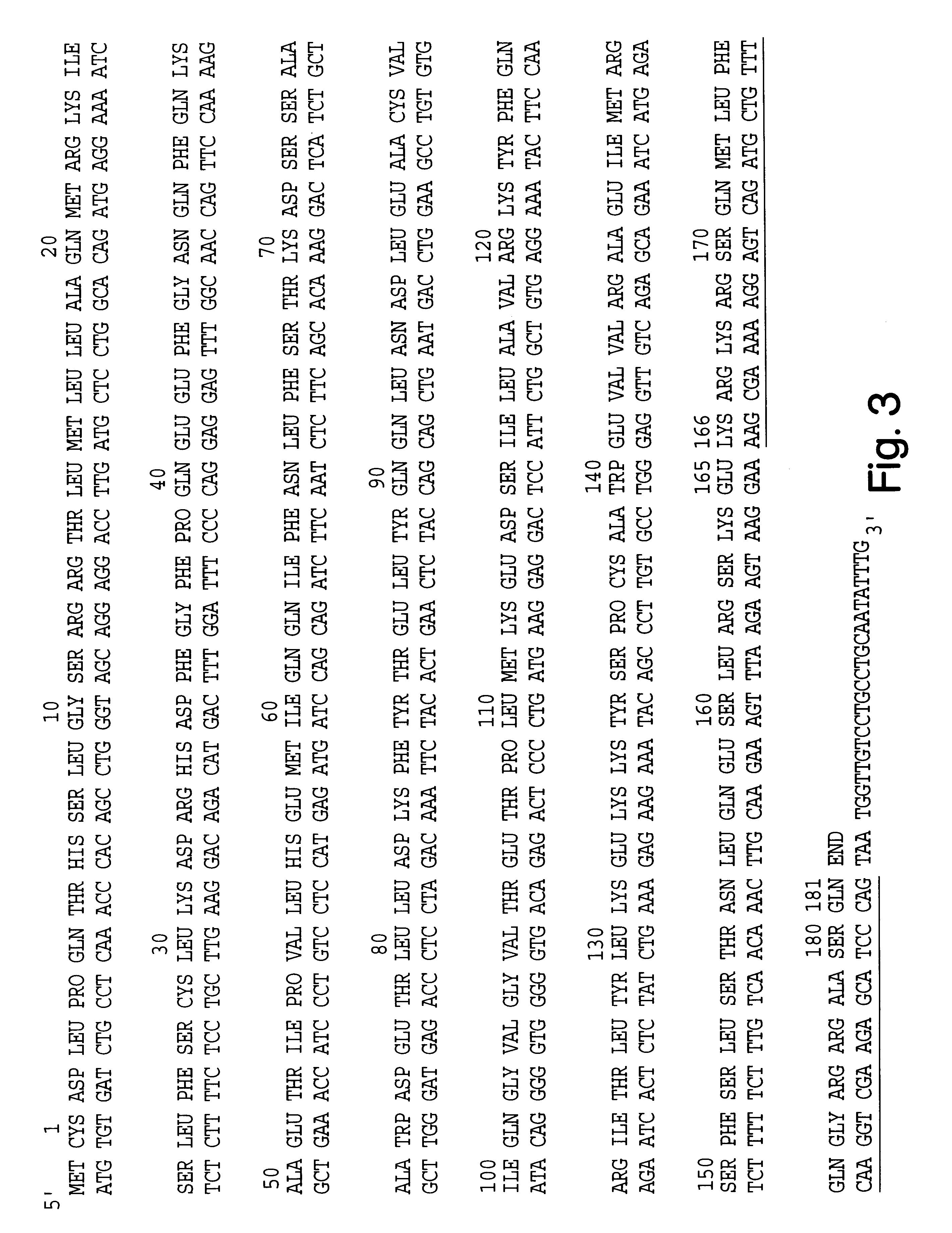Expression vectors for producing modified proteins
a technology of expression vectors and proteins, applied in the field of expression vectors for producing modified proteins, can solve the problems that the patent literature does not address or disclose human interferons, and achieve the effect of improving radiation and therefore diagnostic and therapeutic potential
- Summary
- Abstract
- Description
- Claims
- Application Information
AI Technical Summary
Benefits of technology
Problems solved by technology
Method used
Image
Examples
first embodiment
This description of the invention shows the successful construction of a hybrid DNA sequence capable of coding for an amino acid sequence containing a putative phosphorylation site, the construction of a suitable expression venicle and of a transformed host which readily expressed the hybrid protein with an intact putative phosphorylation site, and its phosphorylation.
The second principal embodiment of the invention reached the initial objective in a somewhat different manner; yet it still resulted in a modified interferon which is phosphorylatable.
While in the first above-described embodiment, the DNA sequence coding for the entire protein which is not phosphorylatable, in this case Hu-IFN-.alpha.A, is modified by fusion at the end of its sequence to a sequence which codes for a putative phosphorylatable amino acid sequence, the second embodiment does not require the fusion to be at the end of the sequence and, in fact, does not require a fusion step.
Thus, the second embodiment sho...
second embodiment
The second embodiment will be described hereinafter.
Hu-IFN-.alpha. Having Inserted Labellable Sites
An important concept of the invention is the incorporation of a kinase-recognizable amino acid sequence into selected proteins (or converting an amino acid sequence which is not recognizable by a protein kinase into a sequence which is so recognized), and labelling the proteins which contain the putative kinase-recognizable phosphorylation site by attaching a selected radioactive label by means of the catalytic action of the kinase.
Generally, these steps will be performed at the level of the nucleotide sequence by DNA recombinant procedures. After the amino acid consensus sequence recognizable by a protein kinase is identified, the nucleotide sequence encoding this amino acid sequence can be defined and constructed. For purposes of this disclosure, a nucleotide sequence encoding an amino acid sequence recognizable by a protein kinase will be designated a "PK nucleotide sequence". Simil...
PUM
| Property | Measurement | Unit |
|---|---|---|
| temperature | aaaaa | aaaaa |
| temperature | aaaaa | aaaaa |
| pH | aaaaa | aaaaa |
Abstract
Description
Claims
Application Information
 Login to View More
Login to View More - R&D
- Intellectual Property
- Life Sciences
- Materials
- Tech Scout
- Unparalleled Data Quality
- Higher Quality Content
- 60% Fewer Hallucinations
Browse by: Latest US Patents, China's latest patents, Technical Efficacy Thesaurus, Application Domain, Technology Topic, Popular Technical Reports.
© 2025 PatSnap. All rights reserved.Legal|Privacy policy|Modern Slavery Act Transparency Statement|Sitemap|About US| Contact US: help@patsnap.com



